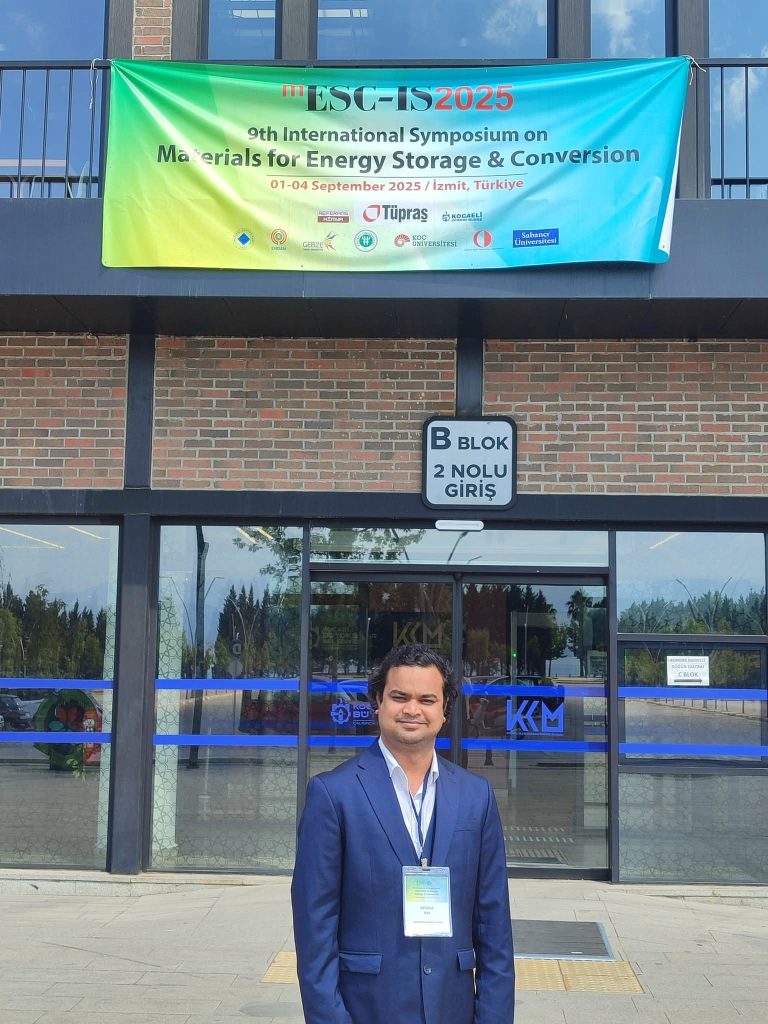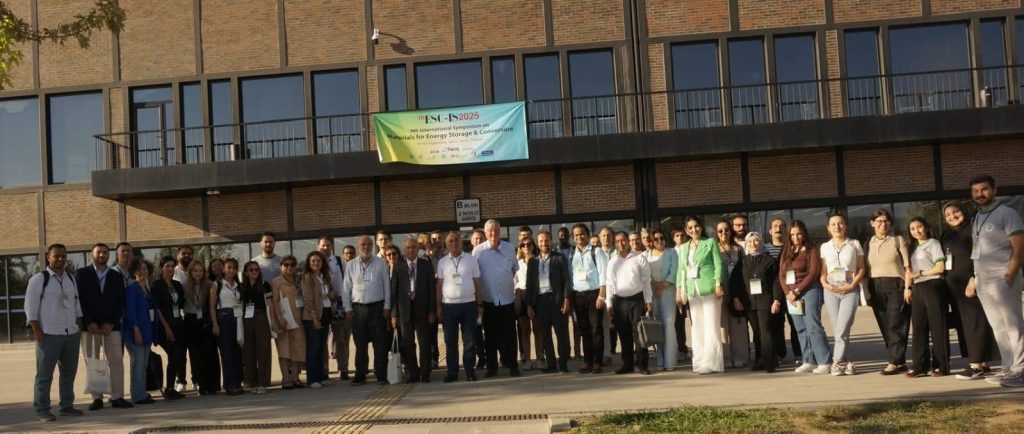The GRAPHERGIA project, represented by our partner Apurba Ray, Research Scientist at German Aerospace Centre (DLR), participated in the 9th International Symposium on Materials for Energy Storage and Conversion (mESC‑IS 2025) with an oral presentation. The symposium was held at Kocaeli University’s Umuttepe Campus, in Izmit (Turkey), on 1-4 September 2025. The event, preceded by the four‑day mESC International Summer School (mESC School 2025) on 28-31 August, brought together a diverse community exploring cutting-edge materials for batteries, supercapacitors, fuel cells, hydrogen storage, and advanced research methods.
GRAPHERGIA’S Session at mESC-IS 2025: A Well-Attended Presentation with Global Engagement
Apurba Ray delivered an oral presentation attended by nearly 30 participants, under the title “Ionic liquid integrated high-voltage polymer gel electrolyte to improve the capacitance and cyclic stability of supercapacitors” on Wednesday 3 September at 10:50h in Kocaeli Congress Center, that you can download on GRAPHERGIA’s Zenodo. The audience hailed from across Europe, the Caucasus, the Middle East, the Mediterranean rim, and Africa, with a few attendees joining from North America, including Mexico.
The presentation captured significant interest. Attendees ranged from undergraduates and postgraduate students to emerging young researchers and distinguished senior professors. “The novel and innovative work of the GRAPHERGIA project under the Graphene Flagship has attracted wide attention from the audience. Our presentation received a lot of positive feedback, comments and suggestions from undergraduates, postgraduate students, young researchers and experienced senior professors from various institutions and universities”, remarks Apurba. Such engagement underscores GRAPHERGIA’s ability to unite scholars across experience levels and spark meaningful dialogue.
He also shares his gratitude and enthusiasm:
“This mESC‑Summer School 2025 and mESC‑IS 2025 symposium make me feel honoured and motivated after getting an opportunity to chair a session on a very interesting topic beyond Li-battery, mainly on Zn-ion and Zn-air batteries, which encourages me to proceed further in my research. These beautiful moments will remain engraved in my heart forever.” – Apurba Ray
This sentiment perfectly encapsulates the energising fusion of learning, interaction, and inspiration that characterised the event. “I personally bagged a lot of new information and experience that will definitely help me to grow and implement in my future research work”, adds Apurba.

GRAPHERGIA’s presence at mESC‑IS 2025 wasn’t just a presentation, it was an example of our role boosting the innovation of graphene-based research in the energy storage and conversion domain. The substantial and geographically diverse attendance, along with the depth of academic feedback, highlights GRAPHERGIA’s resonance throughout the research community. We are always looking forward to connecting with fellow researchers and professionals working on cutting-edge materials for energy storage and conversion.
mESC-IS 2025: The 9th International Symposium on Materials for Energy Storage and Conversion
International Symposium on Materials for Energy Storage and Conversion (mESC-IS) was inaugurated in 2015. The symposium took place in Ankara at METU bringing together experts from hydrogen and fuel cell as well as battery and supercapacitor communities. As a result, an extensive use was made of plenary sessions in this meeting, a tradition that continued thereafter. Initially the symposium was planned for every two years, but this was changed in the Cappadocia meeting. The symposium now takes place every year, odd years in Turkey and even years in one of the participating countries.
mESC-IS series of symposia (as well as the summer schools) are organized with the general guidance of International Steering Committee. Each symposium has its own committees formed in accordance with the tasks undertaken within the particular symposium.


